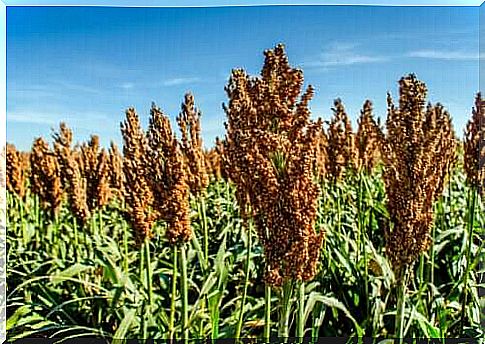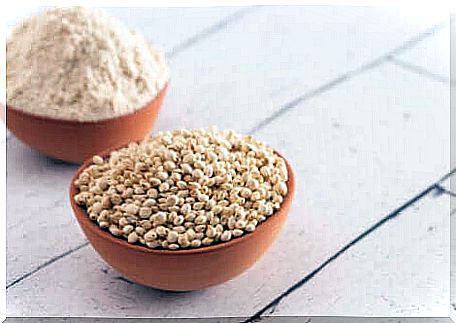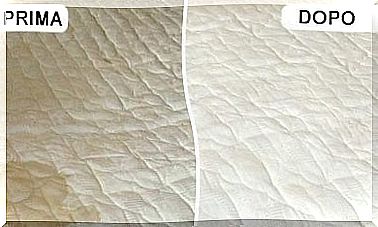Sorghum: Nutrition And How To Use It In The Kitchen

Sorghum is a vegetable that can be used for direct human consumption or for the preparation of alcoholic drinks. It is also frequently used for livestock , as it is rich in nutrients. In terms of its nutrient supply, it resembles many other cereals.
It should be pointed out that sorghum is uncommon in human diets in most Western countries. However, it is better to take advantage of it since it is a food with another content of complex carbohydrates and fibers.
Nutritional values of sorghum
As we just said, sorghum contains a large amount of carbohydrates in it. Precisely, 72 grams for every 100 grams of food.
From an energy point of view, it provides 329 kilocalories and the presence of proteins amounts to 10.6 grams. Fats are less significant, as there are only 3.4 grams of lipids per 100 grams of product.
Among the micronutrients, vitamin B3 stands out with 3.7 milligrams and vitamin B9 with 20 milligrams. It has only 2 milligrams of sodium, which is very good for people with hypertension problems. It is also possible to find minerals such as calcium, iron, potassium and phosphorus.

Benefits of sorghum
In the following lines we describe in detail the benefits of sorghum for the human organism and the position of science in this regard.
Lower risk of constipation
Fiber has been shown to be a key nutrient for maintaining digestive health. Thanks to this, the risk of suffering from constipation is reduced, due to the fact that the size of the fecal bolus and the motility of the intestine increases.
This happens thanks to a stimulation of the mechanoreceptors located in the walls of the digestive tract, which send a nerve signal that triggers more intense peristaltic movements.
Control of arterial tension
High sodium consumption is bad for maintaining an adequate blood pressure level. However, the properties of potassium to perform the opposite function are interesting as a compensation.
According to a study published in the International Journal of Cardiology , this mineral will actually be a voltage reducer. The good news is that sorghum contains significant concentrations of potassium . For this reason, it may be a good idea to include it in the heart disease menu.
Increased bone density
Calcium is one of the elements that determine bone density. There is evidence that its assimilation in the intestine is much greater when the levels of vitamin D are adequate.
However, a correct intake of minerals in the diet drastically reduces the risk of developing osteoporosis. Sorghum contains them in it, so the presence of this food in your diet can be good for your bone health.
Contraindications of sorghum
Sorghum contains a substance, hydrogen cyanide, which can cause health problems if consumed in excess. To avoid problems it is advisable to avoid ingesting the leaves and the stem, since the greatest quantities of toxic are concentrated in these places.
Likewise, it is advisable to first cook it for 45 minutes to inactivate the substance that remains in residual form. Otherwise, you could have problems like headaches .
However, we must keep in mind that there are people who are allergic to this food. In this case, it should be excluded from one’s diet, due to the reactions it can generate and to various serious consequences, such as a shock.
How can sorghum be used in cooking?
Sorghum is used in cooking like any other grain. The ideal is to cook it with water, as we have already mentioned, for at least 45-60 minutes over medium heat.
From this moment on it can be accompanied with meat , it can be added to a sauce or be part of a salad. It is important that you do not exceed the cooking time to avoid it taking on a chewy consistency, which you may not like.

Sorghum is a gluten-free alternative
Sorghum is a vegetable that can perform the function of many cereals and grains that are part of the usual diet. It also has the advantage of not containing gluten, so it is suitable for those suffering from celiac disease or intolerances. However, some precautions must be taken when it is cooked to avoid its toxicity.
This is an excellent option to complement your fiber intake, while also ensuring low-glycemic carbohydrate intake. Combined with sauces they can make a fantastic garnish.









